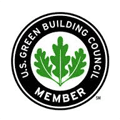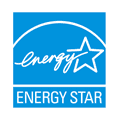The trend in new construction and retrofits can only be described as “extreme green” or “net zero.” Venture capitalists have plowed more than $4 billion into the development of sustainably designed, energy efficient buildings. Now, they are looking at ground-breaking technologies to further develop this space, according to a report just released by Boston-based Lux Research.
To understand investment activity in the green buildings space, Lux Research analysts have followed 332 venture transactions— amounting to $4.06 billion in 160 companies— since 2000. Of the 332 investment rounds in companies that offer technology and materials for green buildings, 152 were series A investments and 83 were series B. Start-ups from North America have attracted 77 percent—or $3.1 billion— of the green building VC invested so far.
Last year, however, nearly 50 percent of the funding—totaling $445 million—went into 15 late-stage investments, signaling the maturation of the first wave of green building start-ups.
Meanwhile, new opportunities are emerging in a number of leading-edge areas, including integrated design, on-site power generation, energy services and the advanced building envelope.
“Early VC investors are looking for exits for the first wave of successful green buildings start-ups and the seeds of the next crop are being sown in on-site generation and sustainable materials,” said Lux Research Analyst Ryan Castilloux, the lead author of the report, titled, “Building a Green 21st Century: Tracking Venture Investments in Green Buildings to Uncover New Opportunities.”
Among their findings:
• Integrated design is the future. Driven by the European Union’s aggressive energy efficiency targets, as well as similar long-term targets in the United States and elsewhere, “integrated design” will attain key importance. Innovative start-ups in this area – including Project Frog (San Francisco) and Blu Homes (Waltham, Massachusetts) – have received $84 million in VC funding since 2008.
• On-site generation is a growth area. On-site generation materials and systems have become a hotbed for investment, raking in a combined $983 million. This sector —represented by the likes of fuel cell company Bloom Energy (Sunnyvale, California) and solar heating company Himin Solar Energy Group (Shandong, China) — has taken in $585 million, just since 2006. A new framework of incentives for on-site power generation and combined heating and energy is pushing more investment. Companies to watch include Baxi Group ((Derby, England), and WhisperGen ((Union, New Jersey),which both make micro-generators, as well as companies with systems that convert waste heat to electricity, such as ElectraTherm (Carson City, Nevada) and TAS Energy Houston).
• Low-carbon concrete and cement: The concrete production industry accounts for approximately 4 percent of all global carbon emissions annually. Since 2005, venture capitalists have poured $114 million into seven developers. Lux expects these materials to become the norm in geographies where urban building booms are taking place, such as the BRIC nations.











